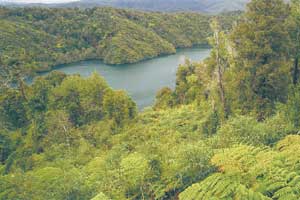The landscape and colour diversity that we may find along our country is not casual. It is determined by the presence of different climates establishing certain characteristic features in each zone, in relation to temperature, humidity, raining, pressure and winds.
Among the factors that make the recognition of different climatic zones easy are the territorial extension (more than 4.000 km), its distance regarding the Equator, the relief (that generates climatic protections), the influence of the Pacific Ocean and the existence of low and high pressure centres.
According to the Chilean Meteorological Directorate, it is possible to detect various kinds of climates in the country, including the particularities of the Antarctic territory and the oceanic islands. Nevertheless, in general terms, we can point out that there are three great climatic zones.
The North of the country is characterized for presenting few precipitations and high temperatures and sunstrokes during the day, predominating desert and steppes climates.
Meantime, the south central zone outstands for presenting more moderated climatic conditions, which could, observe four seasons during the year. It is determined, mainly, by template climates, which registers a temperature decrease and an increase of precipitations as it advances southwards. Finally in the southern zone we can observe a rainy climate and permanent cold.
Climate Particularities
The Chilean territories have in the Antarctic Peninsula as well as in the South Pacific (Eastern Island and Juan Fernandez archipelago) particular climates.
The Antarctic is characterized for being the coldest continent of the planet and for having abundant precipitations in the form of snow. The Chilean Antarctic Territory is not the exception to these extreme conditions, presenting temperatures which annual average is -3°C and very low thermal amplitude.
Eastern Island presents its own characteristics proper of a rainy tropical zone, with an annual average temperature of 20°C, and a humidity reaching a 80% and annual precipitations reaching the 1.000 mm. In the meantime, the Juan Fernandez Archipelago is similar to the warm template with a dry season of 4 or 5 months.
However, it has a more rainy nature, which determines the sector’s special conditions and the development of exuberant and unique vegetation.
Vital Habitat
The temperature and humidity different conditions determine that, lengthwise the territory, there are various ecosystems. These can be grouped in three great categories:
– Xeromorphic: the northern zone of our country is determined by extreme dry conditions and a persistent solar radiation. For this reason, vegetation is scarce and the surviving ones does it thanks to specific adaptations (leaves absence, deep roots etc.) In this zone is possible to find species such as herbs, cactuses, tamarugos and chañares.
– Mesomorfic: this kind of ecosystem develops in between the rivers Aconcagua and Bio Bio, and is characterized for being a transitional zone between the north dryness and the humidity and rainfall of the south. The characteristics of the zone (moderate temperatures, greater availability of water resources and climate stability) favor the growth of considerable vegetation that, in its majority, is caducifolia. Among some characteristic species outstand rauli and oaks.
– Higromorfic: from the Bio Bio, and due to the presence of considerable humidity, the vegetation associations developed in this area are abundant, great-seized and evergreen leaves. Such is the case of the Valdivia jungle.








 Muere Evita
Muere Evita